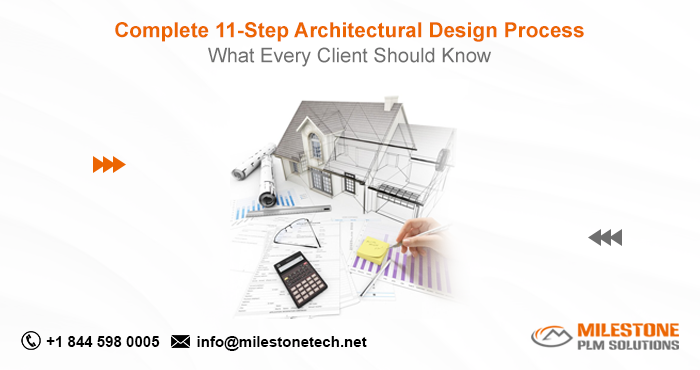Complete 11-Step Architectural Design Process: What Every Client Should Know
- Milestone PLM Solutions
- Nov 4, 2024
- 3 min read
The Architectural Design Process is a structured approach that transforms a client’s vision into functional and aesthetically pleasing spaces. Whether it's a residential home, commercial building, or a public space, understanding each step in the process can empower clients to engage more effectively and ensure a seamless journey from concept to completion. Here’s a breakdown of the 11 essential steps in the architectural design process that every client should know.

1. Pre-Design and Client Consultation
The initial phase is all about defining the project’s goals, budget, and timeline. Architects and clients engage in discussions to understand the scope of work and expectations. It’s essential to address any specific requirements, lifestyle needs, or business objectives at this stage. This step helps establish a solid foundation for the entire project.
2. Site Analysis and Feasibility Studies
Architects conduct a thorough analysis of the project site, taking into account environmental factors, zoning regulations, and existing infrastructure. This step ensures that the site is suitable for the project and aligns with legal and environmental requirements. Site analysis helps in identifying potential constraints or challenges early in the process.
3. Conceptual Design
In the conceptual design phase, architects develop preliminary sketches and ideas based on the client’s vision and the site’s characteristics. This is where creativity and functionality come together to form the first representation of the project. Concept sketches and rough layouts are used to illustrate the basic form and flow of the structure.
4. Schematic Design
During schematic design, the architect refines the initial concepts into more detailed floor plans, elevations, and sections. At this stage, the client gets a clearer picture of the layout and overall look of the project. Design elements, such as structural details, materials, and spatial relationships, begin to take shape, providing a more comprehensive view.
5. Design Development
In this step, architects dive deeper into the design, addressing finer details of the structure. This includes selecting specific materials, finishes, fixtures, and furnishings. Design development helps in refining the aesthetics and functionality, creating a balanced mix of form and utility. The outcome of this phase is a more polished and detailed representation of the final design.
6. Cost Estimation and Budget Review
With a more developed design, architects work closely with cost estimators to evaluate the financial feasibility of the project. This step involves detailed cost breakdowns for materials, labor, and other associated expenses. Clients and architects collaborate to review and adjust the design as needed to stay within budget, ensuring the project remains financially viable.
7. Construction Documentation
Construction documentation is the process of creating detailed drawings and specifications required for the actual construction. These documents serve as the blueprint for contractors and builders, including precise measurements, materials, and instructions. Comprehensive construction documents minimize misinterpretations and ensure that the design is executed accurately.
8. Bidding and Negotiation
In the bidding phase, clients solicit bids from contractors, evaluating proposals based on experience, budget, and project timelines. Architects often assist clients in negotiating terms and selecting the right contractor. A well-structured bidding process helps clients secure reliable contractors who can execute the project within budget and schedule.
9. Building Permits and Approvals
Acquiring permits is a critical step before construction can begin. Architects help clients navigate the regulatory process, submitting the necessary plans and documents to local authorities. This phase may include adjustments to meet building codes and zoning laws. Securing permits ensures that the project is legally compliant and avoids potential legal issues down the line.
10. Construction Administration
Once construction begins, architects play an essential role in overseeing the project to ensure it aligns with the design specifications. Regular site visits and progress reviews allow architects to monitor construction quality, address any unexpected issues, and ensure adherence to the plan. Construction administration is key to maintaining design integrity.
11. Final Inspection and Handover
The final phase includes a thorough inspection to verify that the project meets all design and safety standards. Architects and clients walk through the completed project together, addressing any last-minute concerns or finishing touches. Once satisfied, the project is officially handed over to the client, marking the successful completion of the architectural design process.
Conclusion
Understanding the Architectural Design Process empowers clients to participate actively in the journey from concept to construction. Each step plays a vital role in transforming a vision into reality, ensuring that both aesthetic and functional needs are met. From pre-design consultation to the final handover, this structured process is designed to maximize efficiency, minimize risks, and create spaces that not only look great but also stand the test of time.


